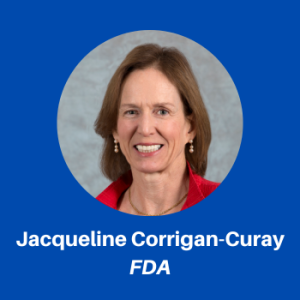Webinar 1: Scientific Evaluation of Safety Data and Aggregate Safety Assessment Planning for IND Safety Reporting |
|---|
The first webinar in the Safety Analytics Working Group webinar series will be on Scientific Evaluation of Safety Data and Aggregate Safety Assessment Planning for IND Safety Reporting and will be held on 15 June (15:00-16:30 BST). A proactive Aggregate Safety Assessment Planning (ASAP) process facilitates earlier signal detection by a sponsor Safety Management Team (SMT). The ASAP process should reflect that evaluation of safety data involves a different mindset than that of efficacy data – a learning and decision-making paradigm, as opposed to a testing and confirming paradigm. The latter provides exact answers to precise questions, while the former provides more useful answers to the right questions. For ongoing blinded studies, the SMT, along with an independent DMC (or other assessment entity firewalled from the study team and able to review unblinded data), play key roles in decision-making regarding the need to submit an IND safety report based on aggregate data. In the June 2021 FDA draft guidance Sponsor Responsibilities Safety Reporting Requirements and Safety Assessments for IND and BA/BE Studies, a ‘trigger method’ is described, where a blinded analysis is used to trigger an unblinded analysis. This approach enables a targeted review of relevant unblinded safety data without compromising trial integrity or otherwise interfering with the planned study analyses. However, the trigger method is only preferred when circumstances are fit for purpose, including the availability of a good estimate of the background rate of the SAEs of interest in the study population. With the trigger approach, if the overall blinded analyses indicate the rate of clinical trial events substantially exceeds the predicted rate, then the unblinded rates by treatment group should be reviewed by a firewalled assessment entity. Otherwise, the alternative method – an independent entity periodically reviewing the accumulating unblinded data – would be preferred. The Bayesian Detection of potential Risk using Inference on Blinded Safety data (BDRIBS) method has been previously described (Waterhouse et al, 2022) and offers a quantitative approach for assessing blinded events that could be used to support the trigger method. Click here to view the other webinars in the series. |
| Presenter | Bio |
|---|---|
Greg Ball served in the Navy and taught High School maths and physics before earning his master’s in statistics from Purdue and his PhD in Biostatistics from the University of Texas. His research on blinded safety monitoring procedures is being developed in collaboration with statistical and clinical scientists at several pharmaceutical companies (including AbbVie and Merck). With Mary Nilsson, Greg co-leads the PHUSE Safety Analytics Working Group. Greg established, with Bill Wang, the ASA Biopharm Safety Monitoring working group and has been pioneering the joint DIA-ASA Interdisciplinary Safety Evaluation (DAISE) scientific working group, to advocate for aggregate safety assessments and cross-disciplinary scientific engagement. | |
Jacqueline Corrigan-Curay, J.D., M.D., is the Principal Deputy Center Director in the FDA’s Center for Drug Evaluation and Research (CDER), where she provides executive leadership on strategic initiatives that advance CDER’s mission to deliver safe, effective and high-quality medications to the American public. Prior to taking on this role, Dr. Corrigan-Curay was the director of CDER’s Office of Medical Policy leading the development, coordination and implementation of medical policy programmes and strategic initiatives, including on real-world evidence, use of technology in drug development and prescription drug promotion. Before joining the FDA, she served as senior medical officer with the Immediate Office of the Director, National Heart, Lung, and Blood Institute (NHLBI) at the National Institutes of Health (NIH). She also served as Director of the Office of Biotechnology Activities (OBA), Office of Science Policy at NIH. Dr. Corrigan-Curay earned her law degree from Harvard Law School, her medical degree from University of Maryland School of Medicine, and a bachelor’s degree in history of science from Harvard/Radcliffe College in Cambridge, MA. | |
Dr Barbara Hendrickson is on faculty at the University of Chicago and a former Vice President of Pharmacovigilance and Patient Safety at AbbVie. She is a physician with subspecialty training in paediatrics and infectious diseases and has 19 years of pharmaceutical industry experience. In addition to involvement in multiple new product and supplementary indication submissions, she has led several company safety initiatives. One initiative was a pilot project for ongoing blinded clinical trials, which implemented a process using pre-designated assessment entities to support IND safety reporting decisions based on aggregate safety data. In addition, Dr Hendrickson co-leads the DIA-ASA Aggregate Safety Assessment Planning (ASAP) Working Group, which has published suggested best practices for the ASAP process. | |
Brian Waterhouse is a senior principal scientist in clinical safety statistics at Merck Research Laboratories. He has more than 20 years of pharmaceutical industry experience analysing clinical trial data across many different therapeutic areas including cardiology, metabolism and endocrinology, dermatology and HIV. His research interests include safety biostatistics and using interactive graphics as investigative and communication tools. He is a co-author of the Bayesian detection of risk using inference on blinded safety (BDRIBS) methodology and the developer of the BDRIBS Shiny app (Safety Signal Exploration using BDRIBS version 2 (shinyapps.io)). Brian is the co-lead of the Benefit Risk Assessment Tool Suite (BRATS) task force within the interdisciplinary work stream of the ASA BIOP Safety Scientific Working Group. |
| In Partnership With | ||||
|---|---|---|---|---|







